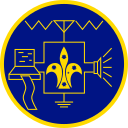With the JOTA / JOTI weekend of the 19-20 OCTOBER 2013 just around the corner, here is a quick list of resources that may help you with running of your JOTA / JOTI Base.
IRLP – www.irlp.net
IRLP (Internet Repeater Linking Project) allows the linking of repeaters worldwide over the internet. It’s a great way to get some quick contacts when the bands are dead on HF or you’ve exhausted your local contacts.
IRLP is much like using a telephone, on the repeater that is IRLP enabled, after checking that you are accessing one of the IRLP Nodes or Repeaters, we use the DTMF keypad on your VHF / UHF amateur radio to transmit while dialling the 4 digit IRLP Node number. A list of IRLP Nodes can be found here.
Remember, with IRLP, you will need to leave 2 seconds between pushing the button and speaking and use the word over so that the part at the other end know you’re throwing it back to them. Leave at least 3 seconds between overs to allow the system to reset.
To disconnect from an IRLP node key “73” on your DTMF keypad. Please remember to close down the nodes during JOTA as others may be wishing to use them.
Echolink – www.echolink.org
Whilst it’s probably a little late to be registering for Echolink on JOTA Weekend, again, it’s another great solution when the bands are quiet. Echolink is a “Computer Radio” program that allows you to speak to other amateurs using a computer and microphone.
You can connect a one-to-one QSO or, using an Echolink Reflector such as SCOUTSAU you can speak to many people just like a UHF/VHF repeater.
Echolink is also connected to Repeaters worldwide, again, remember to leave 2 seconds between keying up and speaking for the best results.
Please remember to set up your Echolink computer and internet connection and test it before JOTA to avoid disappointment.
HF – Call Frequencies List
During JOTA there is are Australian and Worldwide call frequencies so that it makes it easier for you to establish a QSO. Remember to use your manners and QSY off the call frequency once you’ve established your QSO.
VHF / UHF
There’s plenty of repeaters throughout the State and all over the country. Repeaters are a great way to establish local contacts between JOTA Locations. Remember, don’t hog the device, make a few QSO’s then leave the frequency for someone else to part take.
Radio Safety
Whilst it’s great fun to part take in JOTA, it’s a timely reminder to be safe. It’s no fun falling off the roof setting up your station, coming off a ladder, getting hit in the head trying to put up your long wire or zapped with your power supply or radio. Close your station down and move scouts and guides away from radio or other communications gear if electrical storms are near by.
Safety is absolutely paramount. Ensure your equipment is up to scratch, keep your shack neat and tidy and think safe.
A safe JOTA is a fun JOTA!
JOTI – www.scoutlink.net
JOTI is a great way for people to connect during JOTA. Using IRC Chat kids and adults can converse sharing stories and their JOTA / JOTI experience.
Whilst it’s great fun to do JOTI, it’s also important to remember to WATCH – Child Safety is very important and Stranger Danger is an important topic to raise with the kids. If they don’t feel safe, it’s time to tell a leader. If they don’t like the questions they’re being asked, it’s time to tell a leader. Whilst every effort is taken to keep the IRC channels “kid friendly” it’s not always possible.
Facebook / Twitter
Facebook & Twitter (Social Media) are great ways to connect during JOTA / JOTI. If you’re twitter, make sure you use the hash tag #jota, #joti, #hamradio and #amateurradio. It will make it easier for other Twitter users to follow the conversation.
The final final
With all that said, have yourself a wonderful JOTA / JOTI. I look forward to seeing plenty of photos and reports!
73’s
Your JOTA / JOTI coordinator.
